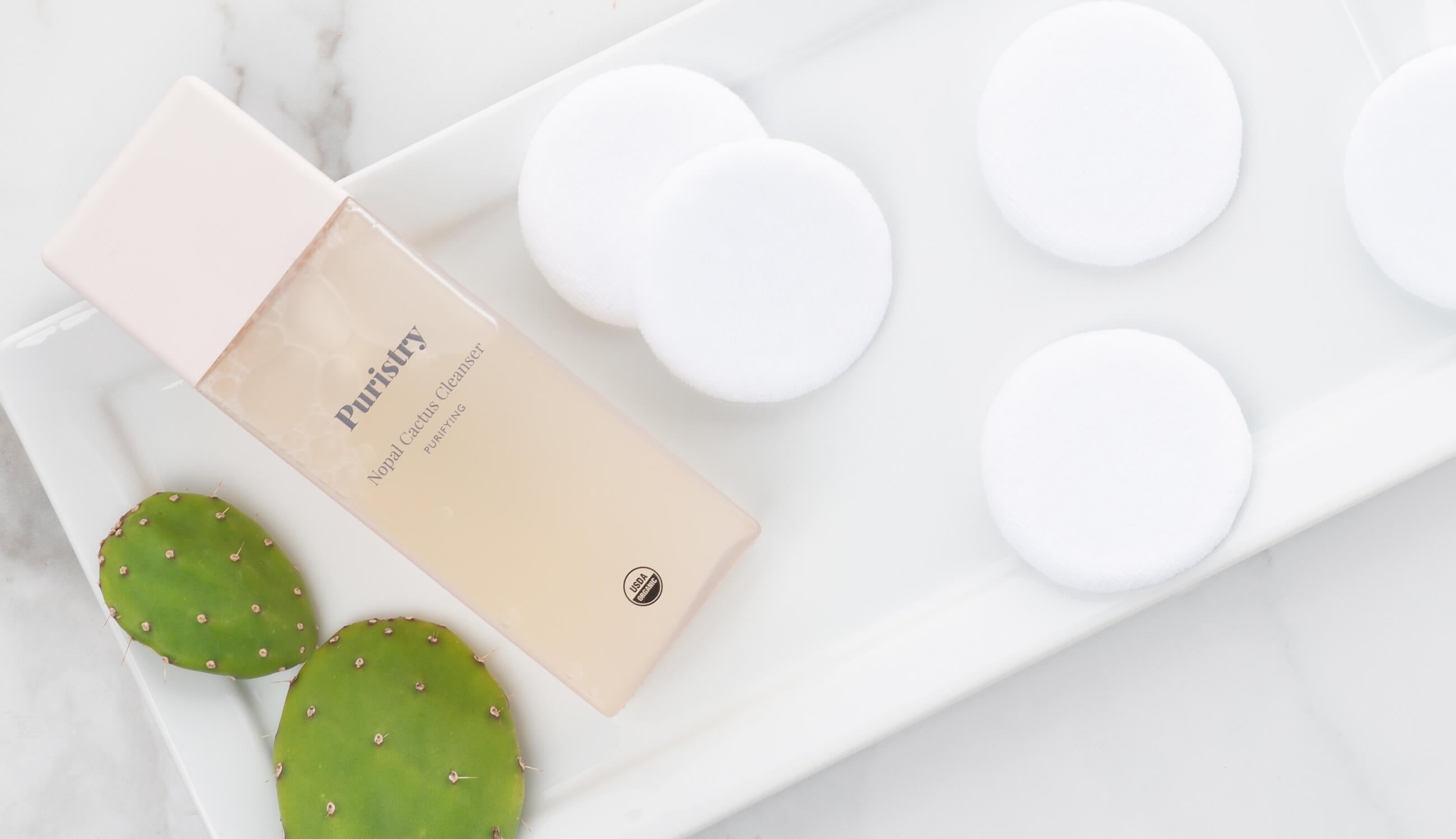Your Cart is Empty
Subscribe Items

Facial cleansing has a reputation for being the simplest, most basic building block of any skin care routine. It’s the essential first step before applying any of your other products, and we all should be doing it every morning and once at night. But the truth is, many of us are cutting corners when it comes to cleansing — meaning improper removal of the day’s buildup of toxins and makeup. Improper cleansing techniques can set your dermis up for blemishes, flaking, oil overproduction, dullness, and a long list of other skin care woes.
So how do you avoid these face-washing-woes? You’ll need to establish a super smart and dependable cleansing routine, use the right tools and ingredients, and avoid harsh chemicals. Sounds like common sense, right? We’ll break it down anyways, to make sure you get a proper cleanse every time.

First thing to get straight: what cleansing ingredients should you be avoiding? Two major redflags are harsh surfactants and synthetic fragrances.
Regardless of your skin type, you should know to steer clear of harsh chemical surfactants: a category of chemical used to make oil and water play nicely together, and responsible for the foaming lather in most over the counter formulas. While surfactants can certainly cut through oil, they also effectively over-deplete your skin’s natural oils, leaving you with tightness and clinical dryness.
Synthetic fragrances are often also hidden in cleansers, used to give them the scent or appearance of being plant-based (think labels that say “lavender scented” but without having any real lavender in the formula). Synthetic fragrance is a known allergen and generally is made up of an undisclosed mixture of petrochemicals and phthalates, both of which have been listed as potential carcinogens.
Two smart substitutions to protect your skin? Look for plant-based surfactants like saponified coconut oil or decyl glucoside, and swap fragrances for natural essential oils.

One common mistake that amounts to a superficial cleanse (and breakouts to prove it) is using cleansing wipes or makeup remover pads — instead of slowing down, hitting the sink, and actually washing your face. Many wipes are soaked in chemical cleansing agents and preservatives that give them a longer shelf life. So if you’re using makeup removing pads, it’s best to follow up with a natural facial cleanser to remove any of the lingering chemicals. The residue left on your skin after using a cleansing wipe can also cause dryness and irritation, compounded by the fact that disposable wipes won’t properly remove all of your makeup.
Generally, in order to properly dissolve eye makeup and any lipid-based foundation, you need to use an oil-based cleansing agent. Even if you’re not doing a full face oil cleanse, you should be using natural plant oils to remove makeup. Pure organic coconut oil will leave you bare-faced, while delivering a dose of essential fatty acids to your gentle eye area.
Another factor that plays into a proper cleanse is the question of what your skin requires in any given season. Although consistency is good when it comes to your nightly cleanse, it's ok to switch up your formula, depending on how your skin is reacting to the weather. For winter skin, which can suffer from increased dryness due to cold temperatures and low humidity, try out an oil cleanser (coconut oil, sunflower oil and jojoba oil are all good options). This will effectively clean your pores and dissolve any hardened sebum, while maintaining natural moisture in your lipid layer. In the hotter months, try out a cleansing formula with naturally astringent ingredients like witch hazel or tea tree oil, or soothing and cooling ingredients like aloe, cucumber water, or floral hydrosols.

Whichever formula you’re using, remember that it always pays off to be gentle — whether you’re using your hands, a brush, or a sponge. First dispense the formula into your hands and be sure to gently rub the cleanser in between your hands to create a small amount of foam (this is called emulsifying!). Wetting your face first with lukewarm water can be helpful too, or start off with damp hands.
Use a massaging circular motion with your palms and fingers to increase circulation and lymphatic drainage as you cleanse. This will leave you with a glowy complexion, healthy color, and increased blood flow. Feel free to keep on massaging for a good minute so you can fully target all debris, leftover makeup, excess oil, and dead skin cells.

Avoid using harsh scrubbing motions, and remember that poking and squeezing at pores will leave you with inflammation and entrenched pore blockages. No matter how tempting it is, don’t squeeze your pores. Leave this to your facialist, or better yet, leave things be. Some of us have naturally larger pores, and this can be dealt with through a combination of plant-based toning ingredients like salicylic acid and antibacterial oils ( like citrus oils).
That said, while poking and prodding will leave you with blemishes and scarring, exfoliating can be key to your nightly cleansing routine, depending on your skin texture. For those of us with slightly thicker skin — rough, uneven, or frequently flaking — a gentle regular exfoliation can be extremely beneficial. Just make sure to choose the right tools. A soft facial brush or a gentle konjac sponge are best for nightly sloughing. And for those of us with sensitive skin that’s slightly thinner or more prone to irritation and breakage: stick with clean fingertips, and once a week exfoliation to keep pores clean.
Here’s our final pro tip: follow up with a face toner to target leftover cleanser residue, balance your skin’s pH, and deeply soothe with hydration. Once you’re done with your cleansing ritual, finish up with the last step of applying moisturizer.
Looking for more skin care how-tos?
How to Use Toner Everyday: Easy, beneficial tips for using a toner in your daily routine.
Comments will be approved before showing up.